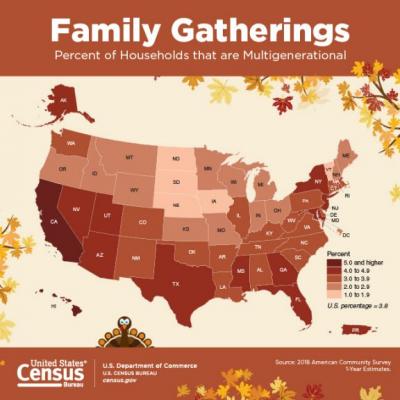In the fall of 1621, the Pilgrims — early settlers of Plymouth Colony — held a three-day feast to celebrate a bountiful harvest. Many regard this event as the nation’s first Thanksgiving.
The Wampanoag Indians in attendance played a key role but historians have recorded harvest ceremonies of thanks among other groups of European settlers in North America, including the British colonists in Virginia as early as 1619.
How many colonists were there? The estimated population in 1620 was 2,499 according to this table on page 25 of “Historical Statistics of the United States,” published in 1949 by the Census Bureau.
The legacy of thanks and the feast have survived centuries since the event became a national holiday on Oct. 3, 1863, when President Abraham Lincoln proclaimed the last Thursday of November as a national day of thanksgiving.
Decades later, President Franklin Roosevelt officially declared that Thanksgiving should always be celebrated on the fourth Thursday of the month to encourage earlier holiday shopping.
Thanksgiving is a good time to reflect on how our founders enshrined in the U.S. Constitution the importance of statistics as a vital tool for measuring our people, places and economy.
Many facts come from Census Bureau surveys.
- There were 122.7 million occupied housing units across the nation in the third quarter of 2019. Alas, no statistics on how many will host family gatherings and Thanksgiving feasts.
- Multigenerational households, those with three or more generations, numbered 4.6 million in 2018. The highest concentration is in California.
- Just 53 pilgrims celebrated the fall harvest, an English tradition, in the New World in 1621. In 2018, some 22.8 million people in the U.S. reported English ancestry. The number in Massachusetts was 607,612.
- The first Thanksgiving included 90 Wampanoag Indians. The 2010 Census counted 6,500 members of the Wampanoag American Indian tribal grouping.
Next year, the 2020 Census plans to count every person living in the United States, including American Indians. Every person counted should report race by marking one or more boxes AND print ethnic origins. American Indians may print the name of enrolled or principal tribe(s). Here is a sample copy of the 2020 Census Questionnaire.


